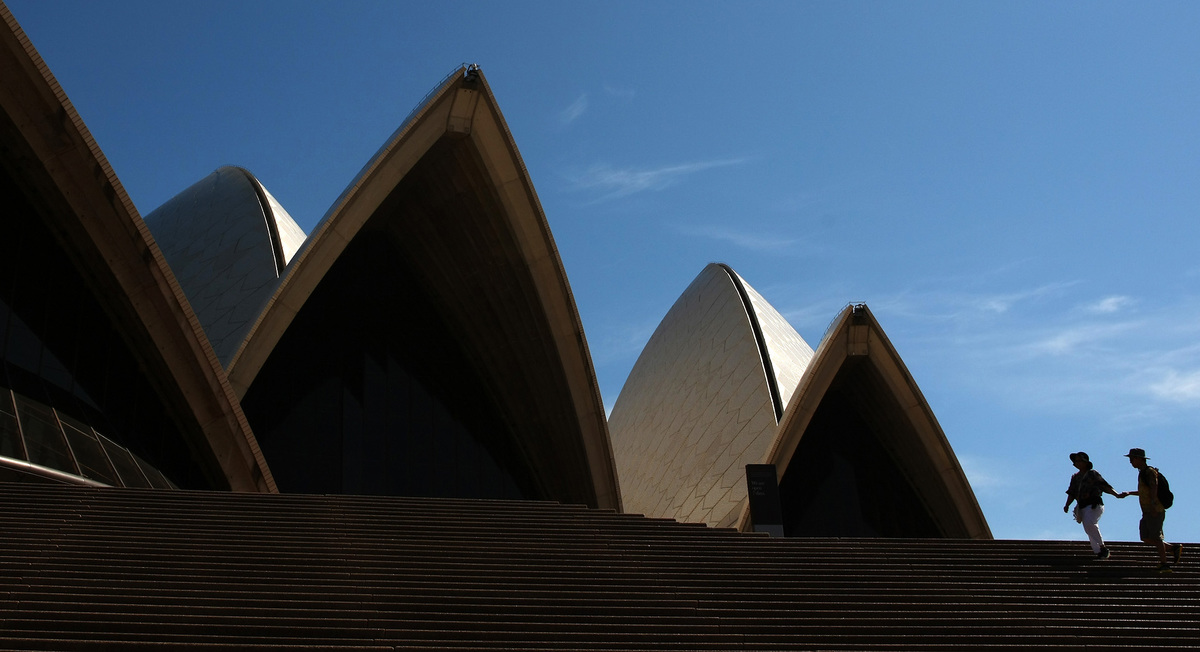
Forget domestic inflation, the Reserve Bank of Australia and even the Federal Reserve. The “black hole” of Japanese and European interest rates will be the thing that drags down Australian bond yields, according to HSBC Holdings Plc.
The advent of negative interest rate policies in two of the world’s largest fixed-income markets is “the biggest beast in the room,” outweighing even China in their impact on Australian yields, according to Andre de Silva, Hong Kong-based head of global emerging market rates research at HSBC. Speaking in an interview in Sydney on Wednesday, he likened the impact of negative-yield Japanese government bonds and German bunds to that of a supernova drawing other markets closer to zero.
“You’ve got the gravitational pull,” de Silva said. With negative yields, he said it’s “no surprise that there’s a desperate hunt to go elsewhere. Australia is a significant target.”
While Wednesday’s weaker-than-expected Australian inflation report prompted traders to add to bets that the RBA will cut its benchmark as soon as May 3, the Bank of Japan will be a key focus before then, with a majority of economists surveyed by Bloomberg forecasting additional stimulus measures when it concludes its two-day deliberations on Thursday.
HSBC is among those predicting further steps from the BOJ, although opinions differ as to what kind of action it might take. Following the adoption of a negative interest-rate policy on Jan. 29, a minority see policy makers taking the benchmark further below zero this month, while a greater number expect them to increase asset purchases.
In the U.S., the Fed on Wednesday opted not to increase its benchmark for a third-straight meeting and said little to encourage bets on a tightening in June. Speaking ahead of the Fed announcement, de Silva said that the risks posed by U.S. rate increases have lessened since the start of the year when the prospect of multiple hikes was being mooted.
The European Central Bank, which like the BOJ is battling deflationary pressures with unprecedented measures, is due to make its next policy announcement on June 2.
In judging the impact of negative rates on offshore bond markets, HSBC points to the increase in the flow of Japanese money abroad.
Japanese investors bought 272.1 billion yen ($2.44 billion) of Australian dollar-denominated debt in February, the most in a year, according to data from Japan’s Ministry of Finance. Among the 10 currencies tracked, including the yen, investments in Aussie fixed income were the highest after those in the dollar and euro. Outflows from Japan continued in March when life insurers, with over $3 trillion in assets, made record net purchases of overseas notes, official data show.
Telling Trend
“If you look in terms of weekly flows, since the 29th of January they’re almost exponential in terms of out Japan, into overseas bonds,” said de Silva. “We don’t know the complexion as yet in terms of country, but the trend is your friend.”
BOJ policy and its impact on local yields will drive life insurers away from Japan’s sovereign bonds and into both hedged and unhedged foreign bonds, Australia & New Zealand Banking Group Ltd. said in an April 26 report. Sumitomo Life Insurance Co. said 30 percent of its investment is in Aussie, while Mitsui Life said it will add unhedged Australian dollar bonds to counter hedging of U.S. Treasuries and European government bonds, according to the note from ANZ analysts Martin Whetton and Katie Hill.
Lower Yields
Following the BOJ’s unprecedented move to negative rates, bond yields in Japan are now below zero out to a decade, with the benchmark 10-year rate at minus 0.06 percent in Tokyo Wednesday, according to data compiled by Bloomberg. Yields on 40-year notes, Japan’s longest maturity, were at 0.395 percent.
The 10-year German bond yielded 0.29 percent, while equivalent Australian notes were at 2.53 percent as of 9 a.m. Thursday in Sydney. Similar U.S. securities were at 1.85 percent.
Extraordinary easing measures by ECB President Mario Draghi have also sent a swath of euro-area notes negative, with German benchmark bonds out to eight years offering a sub-zero rate.
HSBC’s de Silva is predicting that there will be a narrowing of the rate gap between Australia and its developed-market peers.
“Compression is likely to be the order of the day when it comes to Aussie and particularly the long end of the curve,” he said. “The bias is definitely skewed towards lower rates: the question is how to position for that. For now, we’re at the long end.”
(Adds Federal Reserve decision from 6th paragraph, updates prices.)
To contact the reporters on this story: Benjamin Purvis in Sydney at bpurvis@bloomberg.net, Candice Zachariahs in Sydney at czachariahs2@bloomberg.net. To contact the editors responsible for this story: Andrew Monahan at amonahan@bloomberg.net, Garfield Reynolds at greynolds1@bloomberg.net, Jonathan Annells
©2016 Bloomberg L.P.







